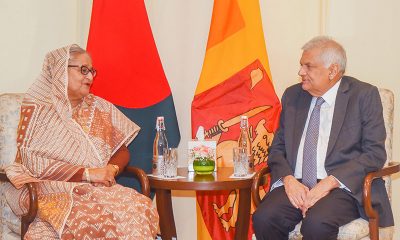Foreign News
Somali pirates free Bangladesh-flagged vessel, MV Abdullah
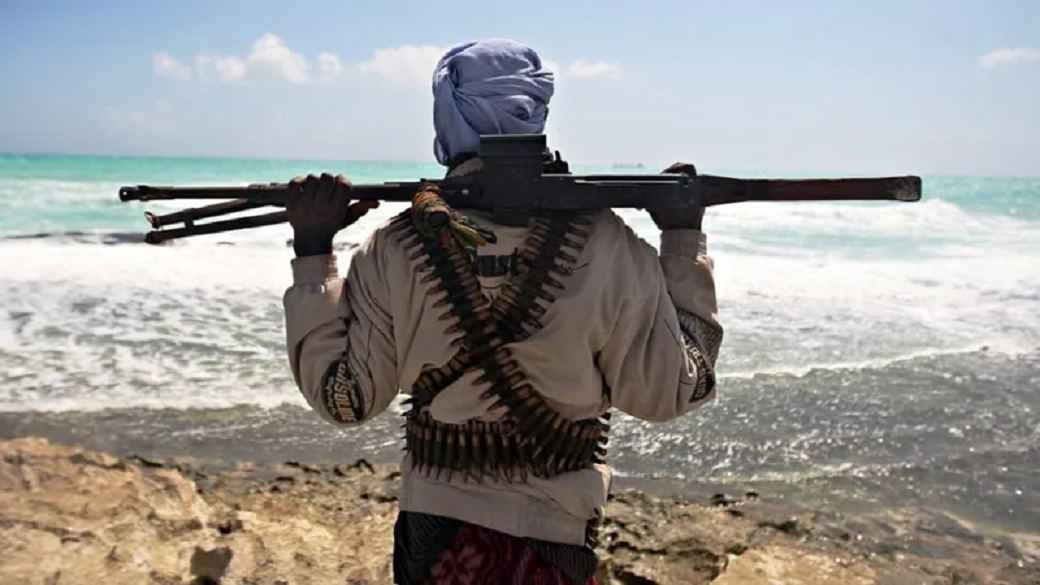
Somali pirates have released a Bangladesh-flagged vessel and its 23-member crew after a ransom was reportedly paid.
The MV Abdullah was carrying coal from Mozambique to the United Arab Emirates (UAE) when it was hijacked off Somalia’s coast about a month ago.
The pirates alleged that they received $5m (£4m), but there is no independent confirmation of the claim.
A spike in hijackings has been reported off Somalia’s coast in recent months. More than a dozen vessels have been targeted since late November.
Security experts said a security vacuum had developed off Somalia’s coast after foreign navies patrolling its waters turned their attention to the Red Sea, where Yemen’s Houthi rebel group have been attacking ships.
Between 2005 and 2012, pirates off the Horn of Africa raked in between $339m and $413m by holding crew members hostage and demanding ransom payments, the World Bank has estimated.
Reuters news agency reported that it was told by two pirates that a $5m ransom was paid for the release of MV Abdullah and its crew.
“We checked whether the money was fake or not. Then we divided the money into groups and left, avoiding the government forces,” Reuters quoted one of the pirates, Abdirashiid Yusuf, as saying.
The vessel’s owner, the KSRM Group, said the vessel and its crew were freed following negotiations. “We struck a deal with the pirates,” Mizanul Islam of SR Shipping, the group’s maritime arm, told AFP news agency. “We cannot say more about the money,” he said, adding: “All the crew are safe and secure.”
The ship has since sailed to UAE, escorted by two warships.
(BBC)
Foreign News
Earrings worth $769,500 recovered by Florida police after alleged thief swallows them
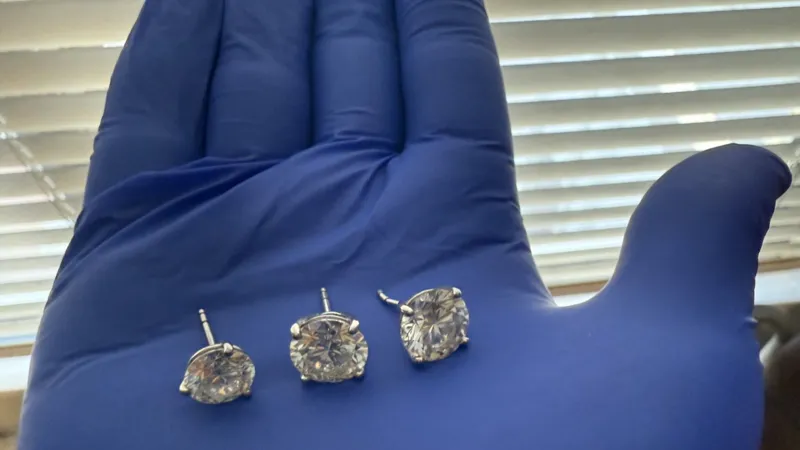
Orlando police have recovered two sets of earrings worth a combined $769,500 (£597,000) after an alleged thief swallowed them more than two weeks ago.
Jaythan Gilder, 32, swallowed the Tiffany & Co. diamond earrings around the time he was taken into custody on 26 February, police said.
Gilder was monitored by detectives at an Orlando hospital for “more than a dozen days” before the earrings were expelled from his system, according to the Orlando Police Department.
He faces charges of robbery with a mask and grand theft in the first degree.
Tiffany’s has since cleaned the earrings.

Police allege Gilder posed as an assistant to an NBA player so he could be shown “very high-end jewellery” in a VIP room at a Tiffany & Co. store in Orlando, Florida on 26 February.
Gilder allegedly distracted store employees, then ran from the store with two pairs of earrings. The suspect apparently also dropped a diamond ring valued at $587,000 as he fled the store.
When officers caught up with him later that day, they saw Gilder “swallowing several objects believed to be the stolen earrings,” police said.
Officials transporting Gilder to jail allegedly heard him say, “I should have thrown them out the window,” CBS News, the BBC’s US partner, reported.
At the jail, Gilder allegedly asked staff, “Am I going to be charged with what’s in my stomach?”
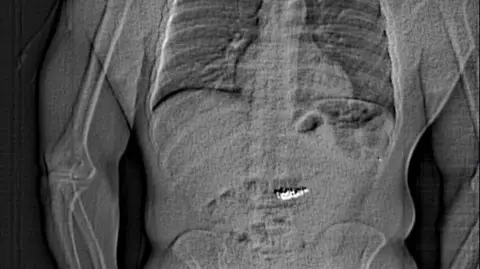
Police later released an x-ray that appeared to show an individual’s abdomen with a foreign object inside.[BBC]
Orlando police department said they took Gilder to an area hospital and monitored him for about two weeks until the earrings were recovered. Detective Aaron Goss said the case “quickly turned into a marathon, not a sprint”.
On 12 March, police said they recovered the fourth Tiffany & Co. earring.
When the earrings were brought back to the Tiffany’s, the store’s master jeweller confirmed that serial numbers on the jewellery matched the stolen pieces, Mr Goss said.
Gilder is currently in custody at the Orange County Jail.
Police allege his criminal history shows a 2022 robbery at a Tiffany & Co store in Texas.
There are 48 separate warrants out for his arrest in Colorado.
[BBC]
Foreign News
Japan, S Korea, China meet to strengthen ties at ‘turning point in history’

The foreign ministers of Japan, South Korea and China have agreed on the need to seek common ground on East Asian security and economic issues amid escalating global uncertainty.
Japanese Foreign Minister Takeshi Iwaya, his Chinese counterpart Wang Yi and South Korea’s Cho Tae-yul have agreed to tackle multigenerational concerns to gain broader support for cooperation, Iwaya said in a joint news conference in Tokyo on Saturday.
The first gathering of the countries’ foreign ministers since 2023 comes as United States President Donald Trump upends decades-old alliances, potentially opening the door for China to forge closer ties to countries traditionally aligned with Washington.
“The international situation has become increasingly severe, and it is no exaggeration to say that we are at a turning point in history,” Iwaya said at the start of the meeting.
“In this context, it has become more important than ever to make efforts to overcome division and confrontation through dialogue and cooperation,” he said.
The three-way meeting is an accomplishment for Japan, which has historical and territorial disputes with both China and South Korea. An earlier trilateral meeting was held in South Korea last year.
China’s Wang said that as this year marks the 80th anniversary of the end of World War II, “only by sincerely reflecting on history can we better build the future”.
He said China supports strengthening cooperation, allowing the countries “to jointly resist risks” and promoting “mutual understanding” between their populations.
“Our three nations have a combined population of nearly 1.6 billion and an economic output exceeding $24 trillion. With our vast markets and great potential, we can exert significant influence,” Wang said.
China, he added, wants to resume free trade talks with its neighbours and expand membership of the 15-nation Regional Comprehensive Economic Partnership.

Reporting from Tokyo, Al Jazeera’s Fadi Salameh said the meetings aim to “build confidence between these three countries”.
“But still, there are so many differences and issues that divide the three countries,” Salameh said.
“Mr Wang Yi, the Chinese foreign minister, mentioned that the three countries – maybe targeting Japan with this point – should be honest about the historical issues that divided [them],” Salameh explained, referring to Yi’s mention of World War II and Japan’s war of aggression.
Beijing is at odds with Tokyo and Seoul on several other key issues, including its support of North Korea, its intensifying military activity around Taiwan, and its backing of Russia in its war with Ukraine.
US allies Japan and South Korea, which each host thousands of US soldiers, share Washington’s view that China – the world’s second-largest economy – poses a growing threat to regional security.
Cho said he had asked China in the meeting to help persuade North Korea to abandon its nuclear weapons.
“I also stressed that illegal military cooperation between Russia and North Korea should stop immediately, and that North Korea should not be rewarded for its wrongdoings in the course of bringing about the end of the war in Ukraine,” he added.
Iwaya is to meet separately with his Chinese and South Korean counterparts, including for the first high-level economic dialogue with Beijing in six years.
That meeting will include a discussion of a ban on Japanese seafood imports imposed by China after the release of wastewater from the destroyed Fukushima nuclear plant from 2023, Iwaya said this week.
[Aljazeera]
Foreign News
Niger declares three days of mourning after mosque attack kills 44
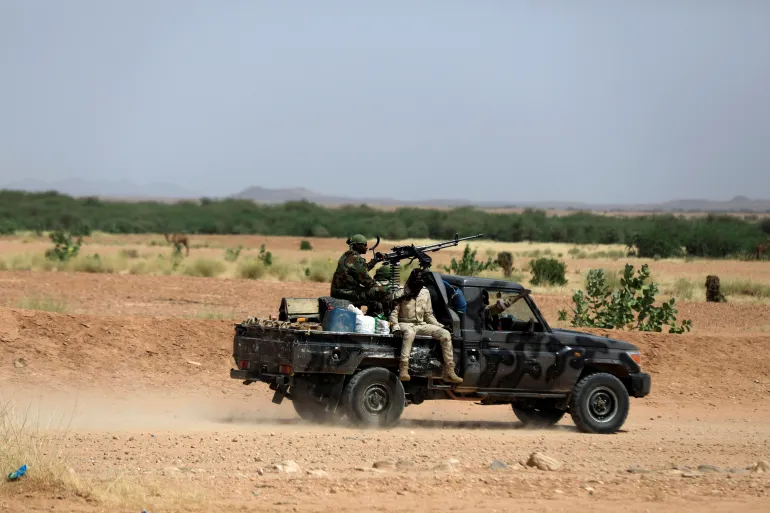
The government of Niger has declared three days of mourning following an attack on a mosque in the country’s southwest that killed at least 44 people.
The victims were killed in a “savage” armed assault in the Fambita quarter of the rural border town of Kokorou, the interior ministry said in a statement broadcast on state television on Friday.
The ministry said another 13 people were wounded.
West Africa’s Sahel region has seen an uptick in violence in recent years following the rise of armed fighters linked to the al-Qaeda and ISIL (ISIS) armed groups that took over territory in north Mali after the 2012 Tuareg rebellion.
Since then, it has spread into neighbouring Niger and Burkina Faso, and more recently into the north of coastal West African countries such as Togo and Ghana.
Niger’s interior ministry said the latest attack occurred early in the afternoon as people were attending a prayer service at the mosque during the Muslim holy month of Ramadan.
“The heavily armed terrorists surrounded the mosque to carry out their massacre with unusual cruelty,” it said, adding that the attackers also set fire to a local market and homes.
The defence ministry blamed the attack on the Islamic State in the Great Sahara, or EIGS, an affiliate of ISIL, in a statement late on Friday.
[Aljazeera]
-

 Business3 days ago
Business3 days agoCargoserv Shipping partners Prima Ceylon & onboards Nestlé Lanka for landmark rail logistics initiative
-

 Sports6 days ago
Sports6 days agoSri Lanka to compete against USA, Jamaica in relay finals
-

 Features16 hours ago
Features16 hours agoThe US, Israel, Palestine, and Mahmoud Khalil
-

 Business3 days ago
Business3 days agoSri Lankans Vote Dialog as the Telecommunication Brand and Service Brand of the Year
-
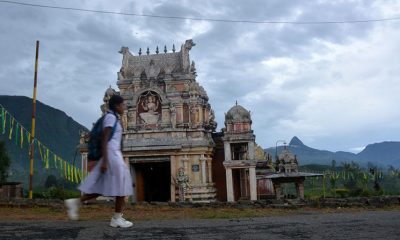
 News16 hours ago
News16 hours agoScholarships for children of estate workers now open
-

 News2 days ago
News2 days agoDefence Ministry of Japan Delegation visits Pathfinder Foundation
-

 Features3 days ago
Features3 days agoThe Vaping Veil: Unmasking the dangers of E-Cigarettes
-

 News16 hours ago
News16 hours agoSeniors welcome three percent increase in deposit rates










